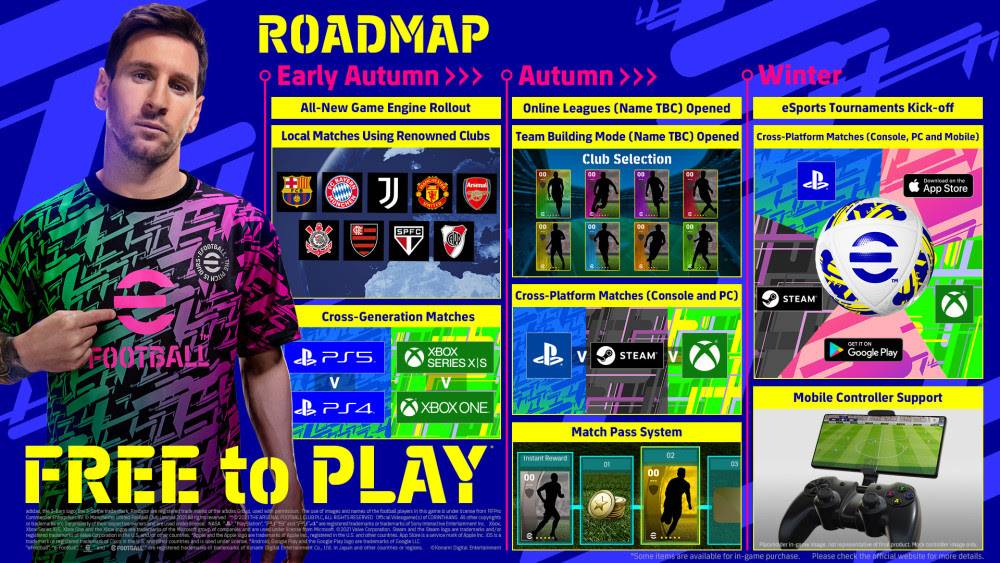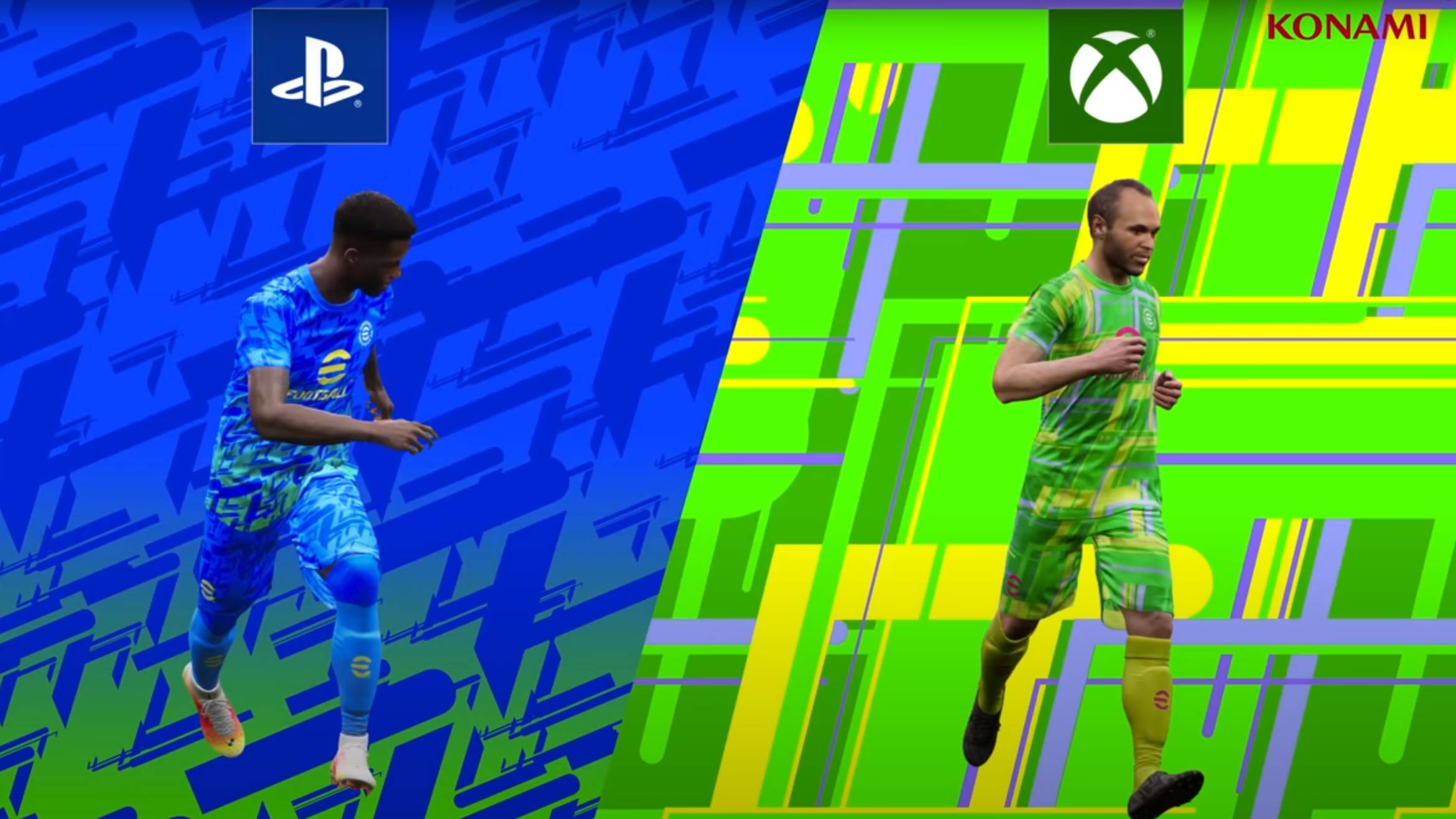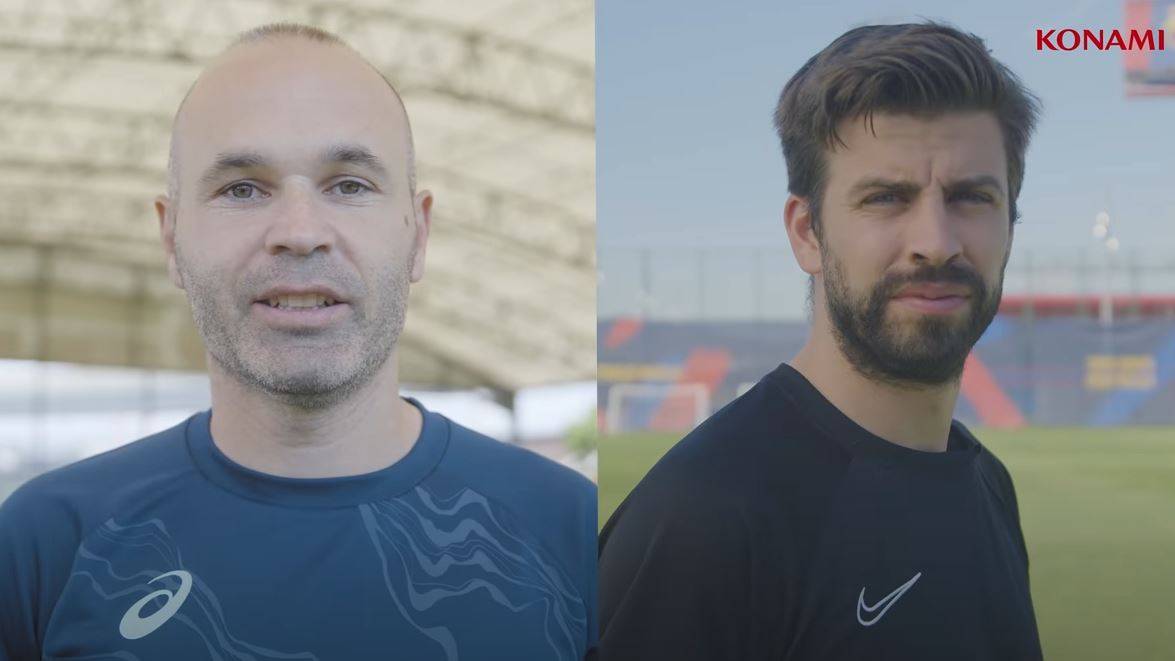How the (pro) evolution of Konami’s eFootball came to be
eFootball is a fresh start for Konami’s long-running Pro Evolution Soccer (PES) series. Not only does the game take a radically different approach by switching from a paid annual release to a free-to-play model, but it’s also being built on an entirely new game engine this time around: Unreal Engine 4.
The shift has naturally led to questions over whether eFootball will be able to overcome some of the typical pitfalls and challenges that the free-to-play model can pose, and how content will be delivered to players after release.
- PS5 vs Xbox Series X: the two consoles compared
- Best PS5 games: you need to play these
- Best Xbox Series X games:
In an exclusive interview with TechRadar, we spoke with eFootball’s producer Seitaro Kimura about how the development team will manage cross-play, the benefits of working with Unreal Engine 4, and what he considers eFootball’s biggest innovation to be.
What's in a name?
From Pro Evolution Soccer to PES, and now eFootball – Kimura explained that the decision to scrap the series’ long-running name (known as Winning Eleven in Japan) was down to a multitude of factors. Chiefly, the prospect of turning the game into a viable esport.
“We were working on a project to revamp the PES game engine to coincide with the release of the next-generation of home game console such as the PlayStation 5 and Xbox Series X|S,” says Kimura-san.
“At the same time, we knew that we needed to meet the needs of the market by making the game free-to-play and cross-platform, allowing players to compete and cooperate across devices.
“Following the major changes in the game engine and business aspects, we [wanted to] create a large cross-platform esports scene. To this end, we made the decision to unify ‘Winning Eleven’ in Japan and ‘PES’ overseas into ‘eFootball’.”
New engine, new start

eFootball is powered by Unreal Engine 4, replacing Konami’s FOX Engine that powered the likes of Metal Gear Solid V: The Phantom Pain and previous iterations of PES behind. Building a game in an entirely new engine is always a challenge, but Kimura-san that Unreal’s development community helped make the series’ transition to Unreal Engine 4 a little smoother.
“With the Unreal Engine, there are many more options for approaches, and with so many people using the Unreal Engine, I can refer to a lot of knowledge,” says Kimura-san. “Also, at UNREAL FEST, I was able to listen to development case studies of titles that had adopted Unreal Engine, so I was able to get more practical information.
“Also, because we were able to develop for all platforms in one environment, we were able to handle cross-platform play relatively smoothly. The gameplay portion of the game uses an in-house football engine, so the integration was very challenging.”
Finessing free-to-play

eFootball is set to launch with nine officially licensed teams in total, and we now know that new teams will be added and updated for free, along with individual squads. “We will also continue to offer Live Update, a free data update service, so each team’s transfers and squad changes will be updated weekly,” says Kimura-san.
There will also be the predictable mix of licensed teams and made up ones, according to Kimura-san. “There will only be a small number of teams available at launch, but other licensed teams with ‘made up names’ will be available as usual via free updates.”
Popular offline modes such as Master League, will be available in the future as “premium downloadable content” in eFootball, and the game will feature a Match Pass system that allows you to pick your favorite players and earn items based on the numbers of matches you play. “Both free and paid passes will be available,” says Kimura-san. “Paid elements will include individual players for our new Team Building Mode, the aforementioned Match Passes, and we plan to sell additional modes in the future."
But how will eFootball balance the multiplayer and single-player components when it comes to fixes and future updates, and avoid falling into the “Pay to win” trap that so many free-to-play games succumb to?
“We do plan to sell the existing offline modes as premium content in the future. As for those fixes and updates, they will be done in the same way for all modes,” says Kimura-san. “We are focusing on making sure that all players can enjoy a fair game, so the game specifications will not be a ‘Pay to Win’ system where paid elements will determine who wins or loses in a match.”
Football freedom

Unlike FIFA 22, eFootball will let you play with friends no matter which platform they’re on, including mobile. If you do opt for the mobile version, which will also support controllers in a future update, the good news is you won’t always need a Wi-Fi connection if you want to get your football fix on, Kimura-san confirms.
“Yes, it is possible to play online using 4G or 5G connection,” Kimura-san explains. “We are developing and adjusting so that differences in communication quality depending on the environment you are playing in will have as little impact on gameplay as possible.”
But will there be a Nintendo Switch version of eFootball? Perhaps, though Kimura-san failed to provide an answer at this point. He did shed some light on what PS5 and Xbox Series X players can expect when they boot up eFootball for the first time, however.
“Please expect to see major visual enhancements on PS5 and Xbox Series X,” says Kimura-san. “However, there is no 120Hz support on console.”
A good kickabout

While switching to free-to-play and choosing a new name is certainly a big deal for eFootball, its success will ultimately be decided by how it recreates the beautiful game. And when it comes to improvements on the pitch, Kimura-san believes that by focusing on the 1v1 element of football, adding a completely new animation system, and by working with some of the best players in the world, eFootball will ultimately benefit.
“The most interesting part of football, in my opinion, is the 1v1 attack and defense. The 1 vs. 1 gameplay is the most innovative aspect of eFootball and will change the balance of the game,” says Kimura-san.
“In order to make this happen, we have innovated in every way possible,” Kimura-san explains. “In order to understand how the best players in the world play, we brought in [Andreas] Iniesta and [Gerard] Piqué as our gameplay advisors and asked them for their advice.
“In addition, realistic gameplay requires both varied animations and high responsiveness. To achieve this, we built a completely new animation system, including technology we call ‘Motion Matching’. You can enjoy the delicate touch of the ball, feinting to deceive your opponent, defending with your body, or blocking a shot at the last second.”
Interestingly, this new approach has led to eFootball adopting a control scheme similar to FIFA, with the triggers now controlling sprint and close control instead of the shoulder buttons.
“With the revamp of the game engine, we have focused on the most exciting part of football, the 1v1 battle between players. As we created the game system by deconstructing the mechanics of winning and losing in real-life 1v1 battles and the tactics used by top-level players, we had to restructure the control method in order for players to enjoy the evolved tactics,” says Kimura-san. “Also, instead of having more complicated controls, the game is more intuitive and allows players to focus on the gameplay against their opponents, so we believe that people who have enjoyed the PES series in the past will be able to get used to it and enjoy playing against each other.”
We won’t have to wait long until we can go hands-on with eFootball, which will release early Autumn (likely September) for PS4, PS5, Xbox One, Xbox Series X/S, PC and mobile. Whether the game will be a championship contender or relegation fodder remains to be seen.
- PS5 vs PS5 Digital Edition: what's the difference?
Contributer : Techradar - All the latest technology news https://ift.tt/2VYbuur

 Reviewed by mimisabreena
on
Monday, August 16, 2021
Rating:
Reviewed by mimisabreena
on
Monday, August 16, 2021
Rating:















No comments:
Post a Comment